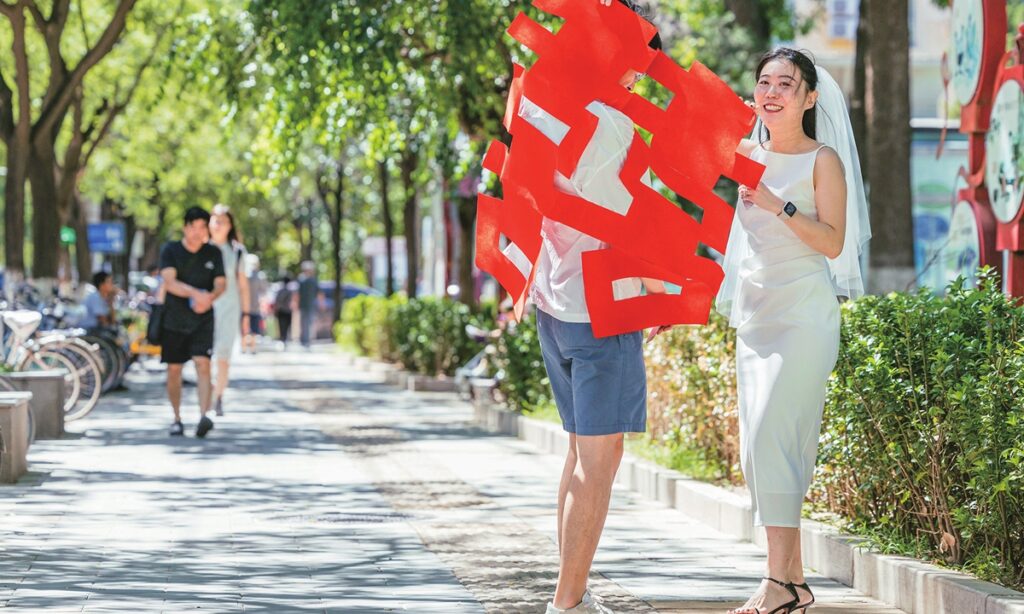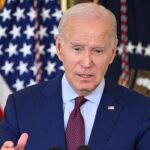Local authorities in Changshan county, East China’s Zhejiang Province, announced on August 24 that in order to further improve the supporting measures for marriage and childbearing, the county will implement a policy by offering a one-time subsidy of 1,000 yuan ($137) for couples who have registered their marriage for the first time and the wife is under 25 years old.
In addition, local authorities in Changshan will also provide a range of subsidies of childbearing and education for couples with children, aiming to reduce the burden and young couples’ financial strain of childbearing, read the statement.
The number of marriage registrations in China in the first quarter of this year reached 2.147 million, while the number of divorce registrations stood at 641,000, an increase of 40,000 and 127,000, respectively, compared with the first quarter of 2022, according to data released on the official website of the Ministry of Civil Affairs.
Statistics show that the number of marriage registrations in the first quarter across China peaked in 2013 at 4.282 million, but since then, the figure has decreased year after year.
The continuous decline in marriage registrations and the number of newborns is directly related to the decline in the number of young people of marriage and childbearing age.
The country’s top health body said that it has already removed the policy of encouraging people to get married and have children at a later age when revising population and family planning law in 2015 and that government of all levels also took the rule out when formulating population and family planning policies.
In 2021, China announced policy changes that allow each couple to have up to three children after the number of the country’s newborns declined for four years straight, according to media reports.
The Changshan government has specifically explained the childcare subsidies and preferential policies in the newly issued statement, highlighting that family will receive corresponding subsidies and enjoy preferential policies according to the number of children.
For maternity subsidy, couples will be given the annual subsidy of 5,000 yuan for birth of two children, and the annual subsidy of 10,000 yuan for birth of three children until the child reaches the age of three.
For the childcare subsidy, families with one child will be given the annual subsidy of 500 yuan, families with two children will be given the annual subsidy of 1,000 yuan, while families with three children will be given the annual subsidy of 2,000 yuan.
Families with multiple children will also receive benefits such as medical subsidies, free after-school services, as well as public transportation subsidies, local government officials noted.
In addition to Changshan, the city of Hangzhou in Zhejiang Province and Lijiang, a city in Southwest China’s Yunnan Province, have introduced similar childcare subsidies to reduce the burden of childbearing, and two-child families account for the vast majority of the groups benefitting from the birth support policy.
Many motions and proposals submitted to China’s annual two sessions in March focus on boosting the low birth rate, after the Chinese mainland recorded negative population growth in 2022, the first time in 61 years. Suggestions include scrapping the requirement to be legally married to register and give birth, and granting children born to unmarried parents equal rights.
(Global Times)




